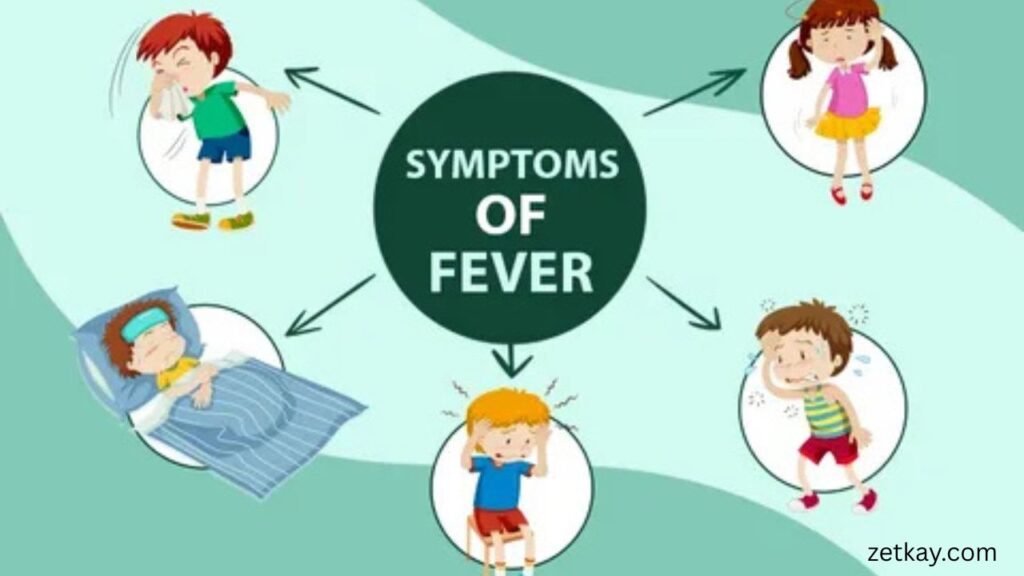Learn about fever causes, symptoms, treatments, and home remedies. Understand viral fever, high fever, and fever in children. Discover when to see a doctor and how to recover quickly.
What is Fever?
Fever is a rise in body temperature above the normal level of 98.6°F (37°C). It is not a disease but a natural response of the immune system. When germs such as viruses or bacteria enter the body, the brain signals the body to heat up, making it harder for these germs to survive. This condition, also known as pyrexia, shows that the body is actively fighting against infections. While a low-grade fever may not be harmful and often goes away on its own, a high fever can sometimes be a sign of a more serious health problem that needs medical care.
Why Does Fever Happen?
The brain regulates temperature through a part called the hypothalamus. When the immune system detects an infection, it releases chemicals that raise the body’s temperature. This rise in temperature makes it more difficult for viruses and bacteria to grow, helping the body fight off illness faster. In simple words, fever is your body’s natural defence mechanism.
Types of Fever
Fever can vary in intensity and cause. A low-grade fever, usually between 99°F and 100.9°F, is often linked to mild infections like viral fever. A moderate fever ranges from 101°F to 102.9°F and is commonly associated with the flu or other seasonal illnesses. When body temperature rises to 103°F or above, it is considered a high fever and requires rest and proper treatment. Temperatures above 105°F are hazardous and count as a medical emergency. Fevers can also be classified by cause, such as viral fever from viruses like dengue or COVID-19, and bacterial fever from infections such as pneumonia or strep throat.
Causes of Fever
There are many reasons why fever develops. The most common are infections. Flu, chickenpox, measles, or dengue viruses cause viral fever. Bacterial infections like strep throat, urinary tract infections, and tuberculosis are significant causes. Apart from infections, fever may also occur due to heat exhaustion or heatstroke, especially after spending long hours in hot weather. Children may experience a fever after vaccination, usually mild and temporary. In some cases, certain medicines, autoimmune disorders, hormonal imbalances, and even cancer-related conditions may trigger fever.
Symptoms of Fever
The most apparent sign of fever is a hot forehead or flushed face, which other symptoms often accompany. People may experience body pain, severe headaches, chills and sweating, weakness, and dehydration. Children may become irritable or lose their appetite. A rash, vomiting, or dizziness may appear alongside fever, especially related to infections like dengue or measles.

Fever in Children
Fever in children can worry parents, especially when it rises quickly. Sometimes children may have a 102 fever and headache, or even one with no other symptoms. Most of the time, such fevers are caused by viral infections and improve with rest and fluids. However, parents should seek medical help if the fever remains above 102°F for more than two days, if the child looks extremely weak, or if other severe signs like seizures, vomiting, or breathing problems appear. Mild fever after vaccination in children is also common and usually not dangerous.
Fever in Adults
Adults may handle fever better than children, but a persistent high fever should not be ignored. Common symptoms in adults include headache, muscle pain, weakness, and chills with sweating. Long-lasting fever may cause dehydration and tiredness, making it difficult to carry out daily tasks. If an adult’s fever lasts longer than three days, it is essential to consult a doctor to rule out infections or underlying health conditions.
Home Remedies for Fever
Many mild fevers can be treated at home with simple remedies. Drinking plenty of water and fluids helps prevent dehydration. Resting in a calm and airy room allows the body to recover faster. Applying a cold, wet cloth to the forehead or taking a lukewarm sponge bath can reduce temperature. Eating light meals like soups and wearing breathable clothing also help in faster recovery. These methods of fever treatment at home are often enough for low-grade fevers.
Medical Treatment for Fever
If the fever becomes uncomfortable, medicines may be needed. Paracetamol (acetaminophen) is commonly used to lower temperature, while ibuprofen for fever is another safe option for adults and children above six months. If the fever is due to a bacterial infection, antibiotics may be prescribed by a doctor. However, aspirin should never be given to children, as it may cause a dangerous condition called Reye’s syndrome.
Complications of High Fever
If left untreated, high fever may cause severe dehydration, confusion, or even seizures in children, known as febrile seizures. High body temperature can sometimes damage internal organs, so a high fever must always be taken seriously.
When to See a Doctor
It is essential to know when a fever needs medical attention. Adults should see a doctor if the fever rises above 103°F, lasts more than three days, or has severe symptoms such as chest pain, difficulty breathing, or a stiff neck. Children need urgent care if they have a fever above 102°F, are unusually drowsy, or develop a rash, vomiting, or seizures.
FAQs About Fever
Q1. What is the difference between viral fever and bacterial fever?
Viral fever is caused by viruses such as flu or dengue, while bacterial fever is caused by bacterial infections such as pneumonia or strep throat.
Q2. My child has a 102 fever and a headache. Should I be worried?
In most cases, it is a viral infection. Give fluids, let the child rest, and use paracetamol if recommended. If the fever does not drop in two days, see a doctor.
Q3. Is a fever after vaccination normal?
Yes, fever after vaccination is common in children and usually goes away within 24–48 hours.
Q4. How long does a fever last?
Most viral fevers last two to three days, while bacterial fevers may take longer and require antibiotics.
Q5. Can stress cause fever?
Stress and exhaustion can sometimes trigger a mild fever, though this is uncommon.
Conclusion
Fever is not always a sign of danger, but a signal that the body is defending itself. A low-grade fever often improves independently, while a high fever needs proper care. Fever can be controlled effectively with home remedies, hydration, and timely medical treatment. However, ignoring prolonged fever in adults or children can lead to serious complications. Parents should stay alert when handling cases like fever and headache in a child, with no other symptoms, or 102 fever and headache in a child, as medical advice may be necessary. Understanding the causes, symptoms, and treatments allows you to manage fever safely and ensure a faster recovery.
